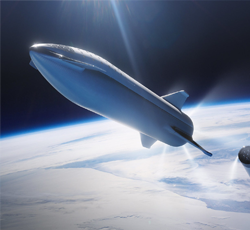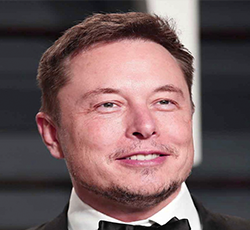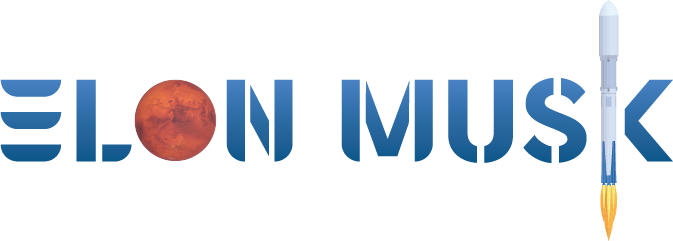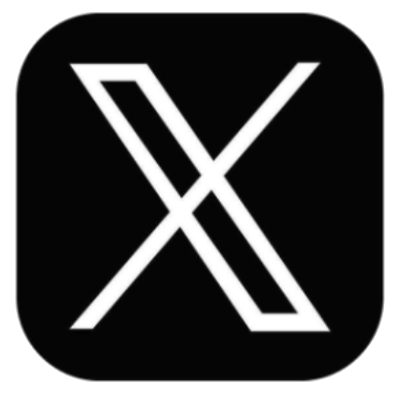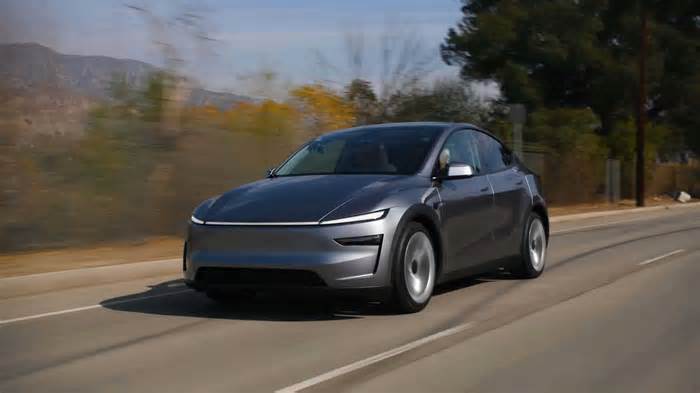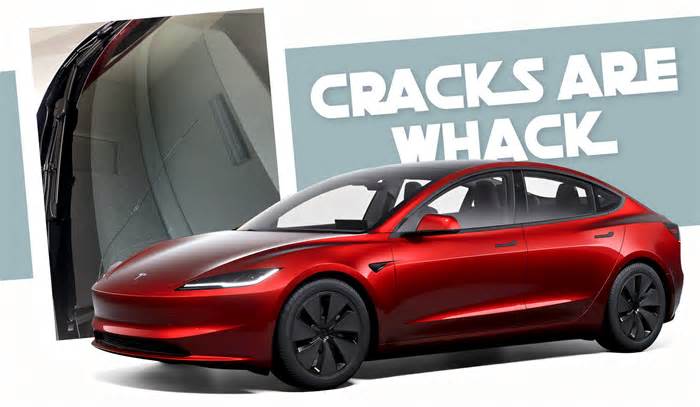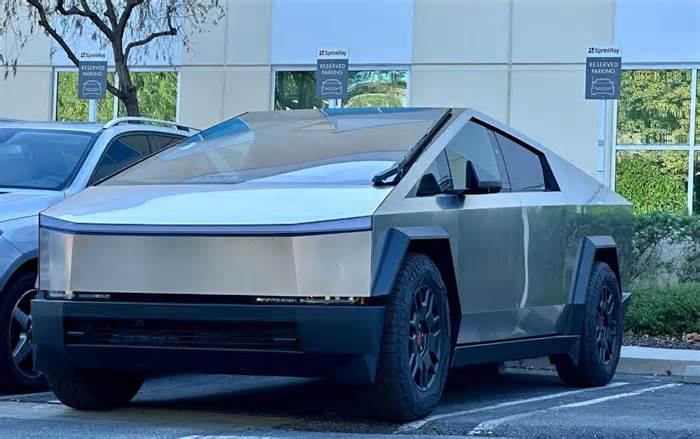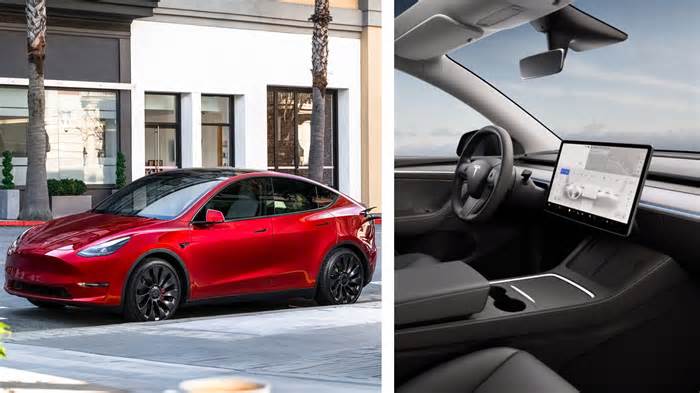
BYD Sealion 7 vs Tesla Model S
- by Carsguide.com.au
- Feb 18, 2025
- 0 Comments
- 0 Likes Flag 0 Of 5
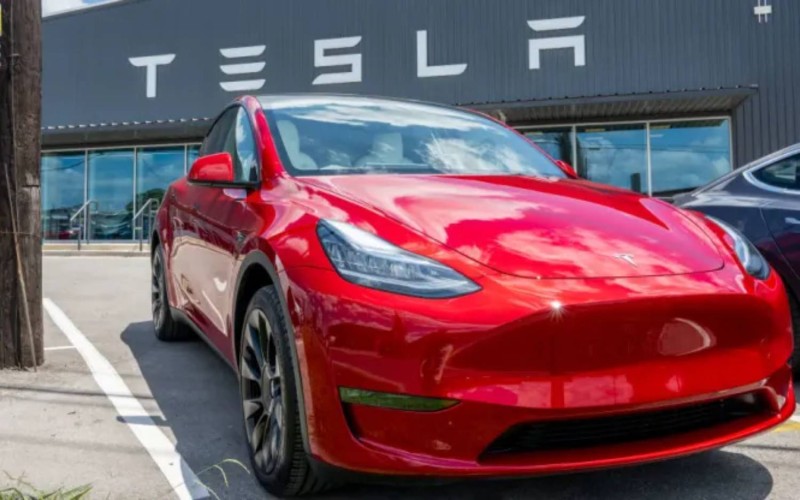
Verdict
Not the most comprehensive of tests, I'm afraid, but on first impressions the BYD Sealion 7 feels like a very solid offering that delivers on price and spec, too.
Note: CarsGuide attended this event as a guest of the manufacturer, with travel and meals provided.
Verdict
I spoke to a friend who bought a Model S before one had even hit the ground here in Australia. He chuckled when I told him how much this car cost but then said something I'd already suspected. "My mates who own a P100D would never drop that kind of money on a normal car. Buying a Tesla is like buying shares in the company, you're buying into the future."
And that's kind of the point. A $300,000 Audi RS7 (fully-loaded, obviously) is a bit slower in a straight line, looks just as good, is extremely well-built and emits noises that make people like me go as weak at the knees (just as the Model S' acceleration does). And would probably win a 10 lap race with the Tesla around Mount Panorama.
The Tesla is the future of cars. It may still be decades before the internal combustion engine is gone, but Tesla buyers are getting the jump, and today the Model S is the best car in which to make that leap.
Design
Probably not what you might describe as revolutionary design, the Sealion 7 still presents as a clean, functional and relatively premium-feeling SUV – and one that doesn't look in any way confronting or overly futuristic.
The lights are LED and look sleek in the way they are cut into the body work, and the swept-back roofline, including the rear windscreen spoiler, lends the Sealion 7 an athletic look, too.
Inside, the Sealion 7 is a comfortable and well-trimmed space, with soft-touch materials placed wherever you're likely to interact with the car, and a gigantic central screen that handles tech duties - with some climate control shortcuts that are a nice touch, too.
But most happily of all, there is not one but two screens for the driver; a display screen in the driver's binnacle, and a head-up display, both of which deliver the info you need without having to turn your head.
Design
The Model S is definitely the looker of the three Tesla models on sale (the Model 3 might be some way from release, but you can reserve one and it's... weird-looking). With a slinky, Jaguar XF/Audi A7 roofline and low-slung stance, it looks the business. Like the X, the detailing of the car's surfacing and panel gaps aren't where other $200,000+ cars are, but it has improved a lot over the last couple of years.
The cabin has improved even more than the exterior.
The styling is quite sparse, really. Teslas look like computer renders in real life, especially in white, with little in the way of jewellery or detailed design elements. And that's probably the idea. It's a cleaner design than when first launched, with a simpler, flatter snout that brings out the headlights better.
The cabin has improved even more than the exterior. It's still the same minimalist design, but it fits together much more tightly than it used to. The 17.0-inch portrait screen is still there in its central but skewed-to-the-driver position and is now up to version 8. It's an impressive interface, covering off the vast majority of functions in the car, and is mostly easy to use. The responsiveness is key to its usability. If it was underpowered, you'd quickly start demanding real buttons.
Practicality
The Sealion 7 is just over 4.8m long, 1.9m wide and 1.6m tall, and it rides on a near three-metre wheelbase.
The real party trick of the Sealion 7, though, isn’t one you’ll get to enjoy as the driver, it’s all about the back seat. There is oodles, and I mean oodles, of room for rear riders, helped by the wide, flat floor that adds extra space to spread out.
Sitting behind my own 175cm driving position, I have heaps of knee room, plenty of head room, and thankfully the glass roof has a shade, too.
Elsewhere, there are two cupholders in the rear seat divider, USB-C and USB-A charge points, seat heating for backseat riders, and air vents, but no way to control your own temperature in the backseat.
At the boot, you’ll find a very usable, flat-floored 500 litres of luggage space, and you can adjust the floor height to make carrying bulkier items a little easier. There’s a second smaller space in the frunk as well.
Practicality
The Model S is a rare car in this class in that it has an almost completely flat floor, meaning rear seat passengers don't have to negotiate a transmission tunnel. The two motors run physically independently of each other so there's no crankshaft to get in the way.
The floor is thicker than a normal car, it's like a big skateboard underneath. That means your knees are up higher, which might cause numb bum on a long trip. The rear seats are comfortable enough, but middle seat occupants might feel like the outboard passengers are falling into them.
With all that torque, when you do load it up, the extra kilos barely make a dent on the performance.
The view out isn't too bad given the rising window line, and if you've got the big two piece sunroof (without cover, irritatingly... ), it's quite airy out back. And hot (with the sunroof), but you do get rear air-con vents.
The boot is an eminently sensible 744 litres with the seats up and 1795 with the seats down, although the floor doesn't fold flat. While it's a big boot, it's relatively shallow so your suitcases go in on their sides. Up in the front boot (or froot) there's another 150 litres, so you can pack a lot in to the Model S. And with all that torque, when you do load it up, the extra kilos barely make a dent on the performance.
Price and features
The Sealion 7 will be offered in two trim levels — the Premium, at $54,990, and the Performance, at $63,990, both before on-road costs.
That pricing significantly undercuts its key competitor, the soon-to-launch Tesla Model Y Juniper, which also arrives in two trim levels, and lists at $63,400 for the RWD and $73,400 for the Long Range AWD, both before on-road costs.
It should also be pointed out that, while the Tesla Model Y will be target number one, the Sealion 7 also launches into an increasingly congested, and very competitively priced, mid-size electric SUV segment where it will meet models like the XPeng G6, the Deepal S07 and the cheap and cheerful Leapmotor C10.
Both model grades are similarly, and pretty generously equipped, with the Premium scoring 19-inch alloys, LED lighting, a panoramic glass roof and a powered boot.
Inside, there are leather seats (heated and ventilated up front) a leather steering wheel, and dual-zone climate control. Finally, the tech includes a 15.6-inch rotating central touchscreen with Apple CarPay and Android Auto, a 12-speaker stereo, a 10.25-inch driver display and a head-up display, as well as wireless device charging.
The Performance then adds 20-inch alloys, painted front brake covers, a heated steering wheel and heating for the rear seats.
It also has V2L, or vehicle to load, which is one of those things that I’m not sure people are really taking advantage of. And they should, because if you think of the Sealion 7 as a very big mobile battery, this connection is what allows you to use that power whenever you want, for virtually whatever you want.
Price and features
Tesla is basically a technology company - well, a battery company - that makes cars, so the features and options reflect that. It's a gadget-laden five-door hatch powered exclusively by electricity and seemingly full of things that will drain the batteries quickly.
If you view the car's price purely through its standard features list and the cost of options, you're missing the point. If it had a 3.0-litre turbo six, there's no way you'd pay this kind of money for the Model S. But it doesn't have that, it has a bleeding edge battery pack and propulsion system.
The Model S can be had for as little as $118,652 for the 60 offering 400km range, rear-wheel drive, and 5.8s 0-100km/h (but move quickly, Tesla has just axed this model), or as much as this P100D which starts at $250,582.
Standard are a seven-speaker stereo, leather-like trim, 19-inch alloys, reversing camera, 17.0-inch touchscreen, keyless entry and start, forward collision warning, digital dashboard, electric front seats, sat nav, auto LED headlights, auto wipers, internet connectivity via included SIM card, power mirrors and windows and air suspension.
Our P100D came with 21-inch grey 'Turbine' wheels ($6800), panoramic roof ($2300) multi-coat pearl paint (white, $2300) and carbon-fibre interior trim bits for $1500, as well as a carbon lip spoiler for another $1500.
We also had the 11-speaker audio upgrade (with neodymium magnets, don't you know) for $3800 and the 'Subzero Weather Package' (seat heaters, heated steering wheel, wiper blade defrosters and washer nozzle heaters) and on-board high-power charger (speeds up charging with the 'Tesla Wall Connector', $2300).
There was also 'Enhanced Autopilot' ($7600) and 'Full Self-Driving Capability' ($4600). The former is meant for highway running, and comes with four cameras (up from one) and 12 ultrasonic sensors around the car, as well as upgraded processing power to run it all.
The full self-driving is meant for around town. The idea is you punch in a destination, or speak to the computer or passive-aggressively stay silent, which triggers the car to check your calendar and take you to the address in the appointment. Part of the extra cost of that is yet more cameras (up to eight), more sensors, and more number-crunching power.
A 'Premium Upgrades' package adds the overkill of a 'Bioweapon Defense (sic) Mode' that knocks out 99.97 per cent of exhaust particulates and other contaminants.
We would love to tell you how all that worked, but being Tesla 'Hardware 2', it's not ready yet. While these features are being fleet-tested by 1000 cars in the US, your car will run it all in "shadow mode" for data and behaviour validation. One day you'll go to your car and a software update will be ready to download and install the functionality.
Unusually, you can retrofit both of these features for about $1500 more (each) than if you order them up-front. That's very cool and Tesla is probably the only car company in the world that will let you do it.
The 17.0-inch screen's software is regularly updated, like a mobile phone's. Also like a mobile is the sometimes less successful update, in this case the slightly bewildering and difficult-to-use music interface that is very keen for you to make a selection with voice commands, but not ones that go through your phone.
A 'Premium Upgrades' package adds the overkill of a 'Bioweapon Defense (sic) Mode' that knocks out 99.97 per cent of exhaust particulates and other contaminants, using two activated carbon air filters for other nasties like NO2 and hydrocarbon exhaust fumes.
LED turning lights and fog lights, real leather on the armrests, steering wheel and lower dashboard (if you also have leather seating), nappa leather and Alcantara on the dashboard, soft LED interior lighting, power tailgate and backlit door handles for $5300. Thankfully, the silly self-opening front doors in the Model X's pack aren't in this little lot.
Grand total? $297,792. On the road in, say, NSW... $313,013. Youch.
Under the bonnet
The Premium model gets a single rear-mounted electric motor, producing 230kW and 380Nm, which is sent straight to the rear tyres. BYD reckons the sprint to 100km/h takes 6.7 seconds.
But the the dual-motor, AWD Performance adds a second electric motor up front which ups the grunt to 390kW and 690Nm, and lops almost two seconds off the 100km/h sprint, now just 4.5 seconds.
Under the bonnet
The P100D ships with two electric motors fed by a huge battery pack which triples as the bulk of the chassis and a super-strong crash structure. It's also shared with the Model X SUV.
Combined power output is 568kW with more of it out the back rather than up front. Torque is quoted at 1000Nm, but it's likely more than that. Claimed 0-100km/h time is a mildly unbelievable 2.7 seconds, with a further two-tenths to be shaved off when you press and hold Ludicrous Mode and accept a warning that you'll wear the car out faster if you use it.
With 'Ludicrous Mode' comes not just software but a higher capacity fuse that allows more power to be drawn from the batteries for longer to provide the searing acceleration.
Efficiency
Both Sealion 7 models share the same 82.56kWh battery, and the Premium will travel a claimed 482kms between charges on the WLTP cycle. The Performance, with its extra grunt, will cover less distance, with the range dropping to a claimed 456km.
Both feature 150kW DC fast charging, and up to 11kW AC charging, though BYD is yet to confirm charging times.
Efficiency
Zippo. Obviously with the new rules for Tesla Superchargers, it's not as cheap to own and run a Tesla as it was before (from January 2017, all new orders don't get free juice after the first 400kWh), but if you charge it at home (and can get away with it), it'll probably be cheaper than using Tesla's chargers. If you look, there's a company offering $1 per day charging for electric cars.
If I'd charged the car to 100 percent rather than the 80 percent recommended by Tesla for most charges (past that mark, the charge rate drops and the software has to slow to a trickle, doling out the electrons to the different cells), I would have managed just over 400km on the charge.
Driving
Unfortunately BYD's launch drive program was brief at best - about 40 minutes or so across mostly suburban Adelaide - so please do consider the below a taste test. We will put the Sealion 7 to the proper CarsGuide test when we get it down the track.
In the meantime, the Sealion 7 did impress on first impressions. Our test car was the dual-motor Performance, and the power delivery is smooth, constant and absolutely ample for just about anyone.
In fact, I suspect it's a little too ample. While I haven't driven the single-motor Premium, I suspect that will be the pick of the bunch. It's no slouch either, and it will travel further between charges, plus I suspect the power delivery will be better suited to the nature of this mid-size SUV.
In the Performance, the grunt is plentiful, but the Sealion 7 isn't quite set up to take full advantage of it. I was impressed by the grip and the relative lack of body roll, but it's still heavy, and the tyres still complain when you ask too much of them.
That said, the Sealion 7 felt very well set up for urban and long-distance commuting. The cabin is quiet and refined, and the ride is really impressive, even over rough stuff, with BYD managing to make it feel compliant, but not completely disconnected. Which is a win.
Downsides? The power on offer in the Performance is plentiful, which means merely breathing on the accelerator will see you suddenly collecting speed – something you need to be aware on 40km/h and 50km/h streets.
And when you do lift your foot off the accelerator, the Sealion 7 doesn't decelerate immediately. It feels like it continues pushing forwards for a beat or two.
But in a vehicle as potent as the Performance, that beat or two can take you a fair way down the road.
Driving
The first time I drove a Model S, I enjoyed the acceleration and the silence of the electric motor (this was back in the Dark Ages when even the P90 only had one motor). And that has remained, with the air suspension providing a firm but comfortable ride despite the P100D's 21-inch rims and very low profile tyres. Electric motoring in any electric car is addictive.
Much progress has been made (yes, I'm getting to the acceleration, stay with me) in the way it drives. The earlier cars felt too computer gamey, with little feel through the wheel or the seat of your pants. The steering is better, especially in Sport mode, but not a lot gets through the air suspension, so it takes a while to build confidence in the chassis.
One passenger became quite emotional, almost crying. And not just because they were stuck in a car with me.
On the freeway (look, you can read ahead if you must) it's amazingly quiet, with just a bit of a rustling around the mirrors. Well, of course it's quiet, it's electric. For chassis and NVH (noise, vibration and harshness) squashers, not having the marvellous engine noise means much harder work to dull the other noises you just don't hear when there's an internal combustion engine.
And there's the acceleration. As the driver, you obviously know it's quick. Mash the throttle and the response is instant, the horizon closing in on you like you're attached by a very stretched and immensely strong bungee strap that's just been released. The way cars disappear in your rear vision mirror is hilarious.
It's more fun as a passenger, though. The Model X elicited whooping and laughing, but the P100D's extra 0.6s-worth of acceleration over the P90D, delivered with a truckload more G-force, equals silence. One woman said she was glad I'd caught her before dinner rather than after, before bursting forth with a range of expletives. One passenger became quite emotional, almost crying. And not just because they were stuck in a car with me.
Safety
The Sealion 7 yet to receive an official ANCAP rating, but it has been crash tested, and the brand is confident of a five-star result.
The Sealion 7’s safety kit is all present and accounted for, with its nine airbags joined by a more high-tech offering that includes things like adaptive cruise, lane keep assist, front and rear auto emergency braking (AEB) and blind-spot detection.
Perhaps best of all, though, is that – at least on our brief test drive – none of the active safety systems felt overly intrusive or annoying.
Safety
The Model S comes with six airbags, ABS, stability and traction controls, three ISOFIX points, rollover sensors, emergency power disconnect. Additionally, when the software arrives, you'll have full AEB (ours was limited), self-driving and an ultra-clever active cruise that'll change lanes and overtake if the car you're following falls below your set speed.
The Model S scored five ANCAP stars, the maximum available, in April 2015 via the sharing arrangement with EuroNCAP.
Ownership
BYD offers a complicated six-year, 150,000km warranty, so just check what is and isn’t covered, and for how long, before taking anything for granted.
The battery is covered for eight years or 160,000km. Servicing is require every 12 months or 20,000kms, and there’s a capped-price servicing program which covers 10 years of ownership.
BYD’s website has the details for every service, but the most expensive will be $1109 and the cheapest is $246, with most falling somewhere between those numbers.
Ownership
Tesla offers a four-year/80,000km warranty with a parallel eight year/unlimited kilometre warranty for the battery and drive units. Roadside assist applies for the four year warranty period.
Tesla offers two maintenance plans, three and four years in length. The three year plan costs $2100 and the four year $3175. Paying for the services individually over the same period will cost $2300 and $3425 respectively. That includes a wheel alignment (if needed), but it isn't particularly cheap when compared with 'normal' luxury cars.
Your first 400kW/h of recharging is free using Tesla's supercharger network, so that would be four full charges from empty (which you wouldn't do, obviously), or about 1600km worth. After that, it's 35c per kWh or $35 for a full charge.
Interested in a BYD Sealion 7?
Insurance Quote
Please first to comment
Related Post
Stay Connected
Tweets by elonmuskTo get the latest tweets please make sure you are logged in on X on this browser.
Sponsored
Popular Post
tesla Model 3 Owner Nearly Stung With $1,700 Bill For Windshield Crack After Delivery
35 ViewsDec 28 ,2024
Middle-Aged Dentist Bought a Tesla Cybertruck, Now He Gets All the Attention He Wanted
32 ViewsNov 23 ,2024




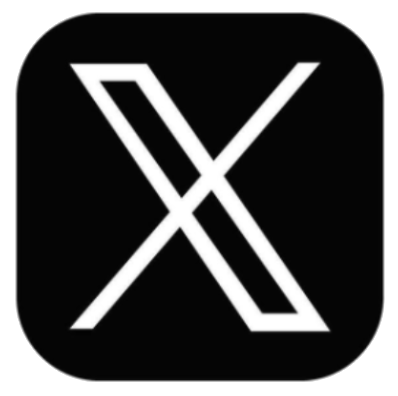
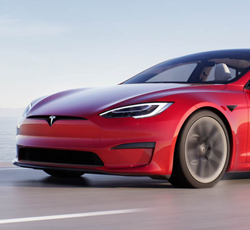
 Energy
Energy